Listen up, gringos. In Mexico, the announcement of Drag Race México was a big deal. While the online drag competition La Más Draga had already brought drag to Mexican airwaves, Drag Race México was a natural step up with its World of Wonder–size budget. It was also the first Latin American Drag Race spinoff to copy and paste the original Drag Race format—unlike The Switch, which died a quiet death after two years in Chile. But how has DRM fared since its June 22 premiere?
“I think it’s already changing TV because it’s changing consciousness in Mexico,” says Óscar Madrazo, a Bravolebrity (Mexican Dynasties) and former judge of Mexico’s Next Top Model who serves as one of the permanent judges on Drag Race México. “Now when people [watch] a show like this … it’s not just the people from the community. The wider public is getting to know the queens’ lives and their struggles.”
And while that wider public mostly includes Mexicans, Drag Race México still has plenty to offer us gringos. In addition to featuring Madrazo on its judging panel alongside Drag Race France star Lolita Banana and Drag Race Season 9 star Valentina, the show boasts an “i-con-i-co” cast of queens. As of today, only four remain—but that’s all about to change when the finale drops at 2 a.m. EDT tonight (the morning of Sept. 7) on WOW Presents Plus. Will the winner be the highly favoured Cristian Peralta, who needs the prize money to feed his wife and daughter? Or will it be his biggest competition, Matraka, who came out of nowhere to dominate the second half of the season? Or will it be a dark horse, like the sultry, sassy Gala Varo or the musically inclined Regina Voce, who previously appeared on the drag singing competition Queen of the Universe?
I may never have encountered this show if it weren’t for my boyfriend, a native of Lima, Peru, who’s more tuned into Latin America’s drag scenes than I. However, I’m glad I did, because it gave me fresh insights into Mexican culture while simultaneously providing several shiny outfits to look at. It also gave me the opportunity to interview the series’ judges and cast, who will now help me lead you through the ups, downs, ins and outs of this messy, frustrating, multifaceted and enchanting season of television.
The Rise of Cristianity
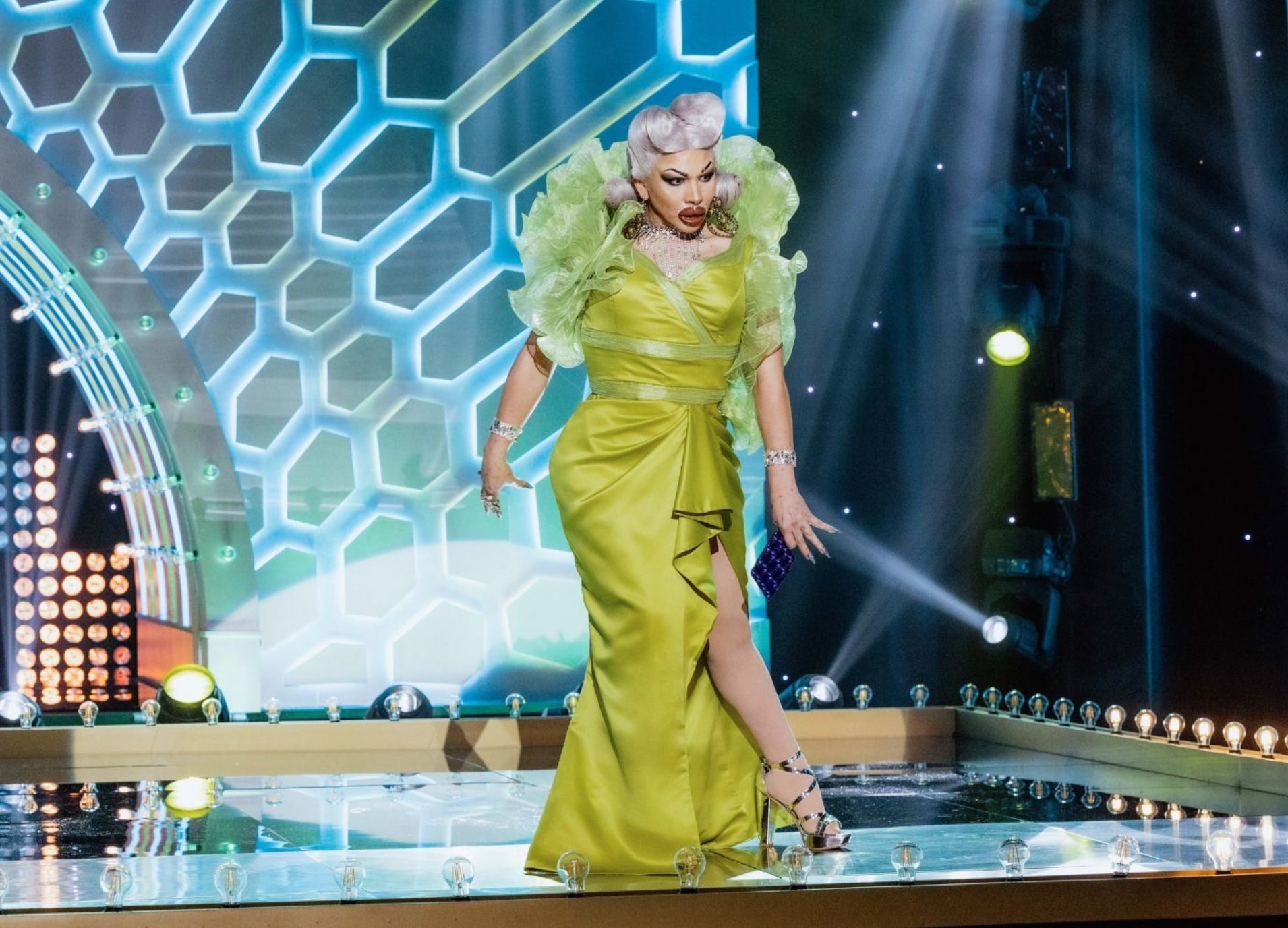
Cristian Peralta during the Telenovela Ball. Credit: World of Wonder
World of Wonder doesn’t seem to trust us to make our own decisions these days. In international Drag Race spinoffs especially, there’s always one queen who producers want to present as i-con-i-co. The chosen queen, who often benefits from blatant favouritism, becomes that country’s de facto drag ambassador on the international drag stage. I guess their undisputed icon status helps international viewers take that country seriously, or something? See Drag Race Holland’s Envy Peru or Drag Race España’s Pitita, both of whom demolished their seasons with a little help from riggory.
In the case of Drag Race México, this queen is Cristian Peralta, a 36-year-old performer from San Pedro Tlaquepaque, who has been doing drag for about three years. Now, Cristian is no slouch. She served up a dramatic reveal in the season’s first runway, and continued to deliver a potent mix of style, talent, modesty and dedication throughout her season. Her lovability was undeniable. “After her reveal in Episode 1, that’s when we really felt that we were in front of the main stage of a new spinoff of Drag Race,” Madrazo says.
But when Cristian stumbled, she obviously stumbled, and DRM always found ways to make excuses for her. In Episode 8, when the entire internet agreed she should have lip synced, the show suddenly changed the rules so that there wouldn’t be a Lip Sync for Your Life that week. Maybe I’ve just seen too many episodes of Drag Detective, but girl, to quote Alyssa Edwards in RPDR AS2, this felt like “rigga morris.” On the other hand, while I was reporting on this show I heard accounts of producers having an outsize presence on set. (So maybe I’ve seen just enough episodes of Drag Detective.) In any case, by the end of the season, Cristian had won no less than five maxi challenges—some deservedly, others rigga-morrisly. In a season that already had an obvious Top 4 by its midpoint, this sapped any remaining tension from the proceedings.
On the other hand, Cristian did something that no Maddy Morphosis had done before. She came on this show identifying as a straight man, then proceeded to win fans over through sheer talent alone. And then … once she’d established her legacy … she came out. Now, I’ll admit I haven’t seen every episode of every other Drag Race, but this felt like a pretty big deal. The token “straight queen,” who heretofore had only talked about his wife and daughter—whom he loves so much—had come out as pansexual. Of course, the other queens had hinted at Cristian’s penchant for bottoming throughout the series, so I wasn’t surprised, but still. This was Drag Race storyline gold. Fans had speculated about her sexuality throughout the season, but the show brilliantly never made a big deal out of it, emphatically choosing to keep the focus on her talent. Then, when she came out, it actually felt like a political statement. She’d proven her place in the competition, and now she could live her truth. “The least important thing about [Cristian’s] art and passage into grace is his sexuality,” Lolita says.
Matraka madness
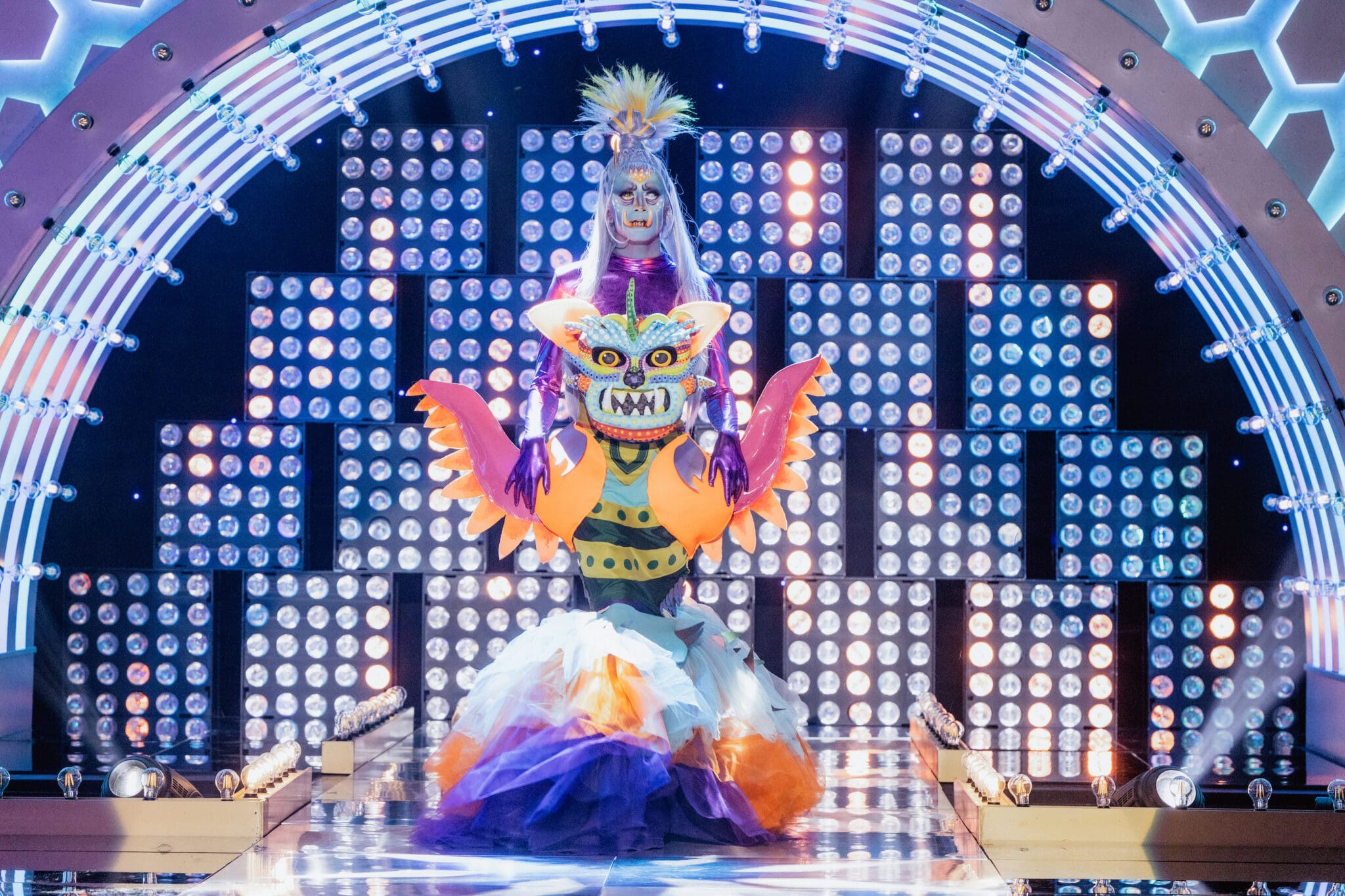
Matraka in her supernatural alebrije outfit. Credit: World of Wonder
In the end, many fans ended up falling for Cristian’s biggest competition, Matraka, instead. In addition to bringing zany Gen Z energy to her confessionals, the 25-year-old former art student and relative drag newcomer exuded kindness, thoughtfulness, ingenuity and humour throughout all of her challenges and runways. The Guanajuato native was also the cutest out of drag, though she’ll never admit it. When I ask her if she was the future of drag (since I believe she is), the ever-modest queen tells me, “Look, I’m not anybody to predict the future.”
Matraka also had a potentially explosive storyline working in her favour. As the season’s underdog, she had a storyline similar to Jinkx Monsoon in Season 5 of Drag Race U.S.—complete with a Rolaskatox to take down. More specifically, this season pitted Matraka against a cliquey trio of best buds: Regina Voce, Gala Varo and the aforementioned Cristian. Due to their previous success outside the show, Regina, 42, and Gala, 34, were already calling themselves the “estelares” (stars) of the season. Of course, they had the chops to prove it too: Mexico City native Regina had made a name for herself among Mexico’s musical theatre crowd, whereas Gala, a Morelia native, had 15 years of performing experience behind her. Still, the estelares often expressed wariness of the younger Matraka’s creative and culturally sensitive take on drag. It all felt like a formula for an epic, Untucked-esque throwdown. But then … it went nowhere. By the end of the season, the estelares and Matraka were besties.
But this was part of a larger trend. No one on this season seemed to have a clear storyline (there wasn’t even a villain!), and every elimination felt inevitable. It was just an entertaining, colourful march to the season’s obvious Top 4. And as with Cristian, production often didn’t hide their machinations. For instance, I still haven’t been able to make heads or tails out of the series’ decision to keep both bottom queens after Episode 1, despite them delivering the weakest Lip Sync for Your Life in modern history. To paraphrase co-host Valentina in the episode: “You two were so bad that we are going to keep you another week—one in which we hope you will do less bad.” More likely, the show needed to reach its 12-episode count and was really banking on a stellar lip sync this episode to justify a double shantay.
Unfortunately, I have no theories as to why the storytelling on this season was non-existent. The word on the street is that the producers on this season were not WOW’s top choice, but that’s just a rumour and I would never give it weight by linking to it.
But on the bright side, the show’s lack of storylines also gave viewers plenty of time to appreciate Matraka in all her glory, sans drama. During Supernatural Week, she turned out a stunner for the ages as an alebrije, a mythical and multicoloured Mexican monster that you may recognize from traditional Mexican designs. Her craftiness was truly beyond.
“We cannot deny … [Matraka’s] taste and her comprehension of fashion, of forms and plastics,” Lolita says. “She has a level of taste. She’s so clever with the fabrics. Nobody else has it.”
Adds Madrazo: “Her looks belong in a museum. They’re very Mexican, very original, very creative and very personal.”
Matraka also has a take on drag that I think could serve as a thesis statement for Drag Race México as a whole. “I think that the discourse must change,” she says. “We have many wounds within the community. Misogyny, stereotypes … things that for me personally should not be done, should not continue to exist. I feel that many times, drag can become misogynistic, can impose stereotypes of how we should look. I think that now drag should be a very big opening of art for anyone to walk through.”
And the Miss Congeniality Award goes to … everyone!
One of the most endearing things about Drag Race México is its decision to replace exit lines with exit dissertations. When a queen leaves, she gets the opportunity to not only thank her judges, but also her fans, her fellow competitors, her pussy, her ancestors, God, Alyssa Edwards and Selena. There’s no bitterness on the queens’ part, nor any schadenfreude on the part of viewers. There’s just the purity of watching a humble, grateful person recognize how this show has changed their life.
Even Lolita felt her impassive exterior collapse during a particularly heartfelt exit speech from Margaret Y Ya, the season’s lovable trans queen. “I think it was the first time in Drag Race history that somebody took her moment to dedicate a word to each of her colleagues,” Lolita said.
But this wasn’t the only trait that gave DRM a distinctive warm blanket feel. These queens were hopelessly in love with each other. Maybe this was due to lack of producer interference; maybe it was just genuine cast chemistry. But there were no toxic takedowns, cruel confessionals or pot-stirring narcissists à la recent U.S. seasons (well, maybe some mean confessionals from Gala, but in good fun). At one point, Cristian and Regina even drew straws to see who would take the top role in a sketch, thus depriving viewers of a fight. In other words, this was a competition, but not at the expense of anyone’s mental health. Sometimes, as I pick lint off of my hoodie, I wonder how Loosey LaDuca is doing.
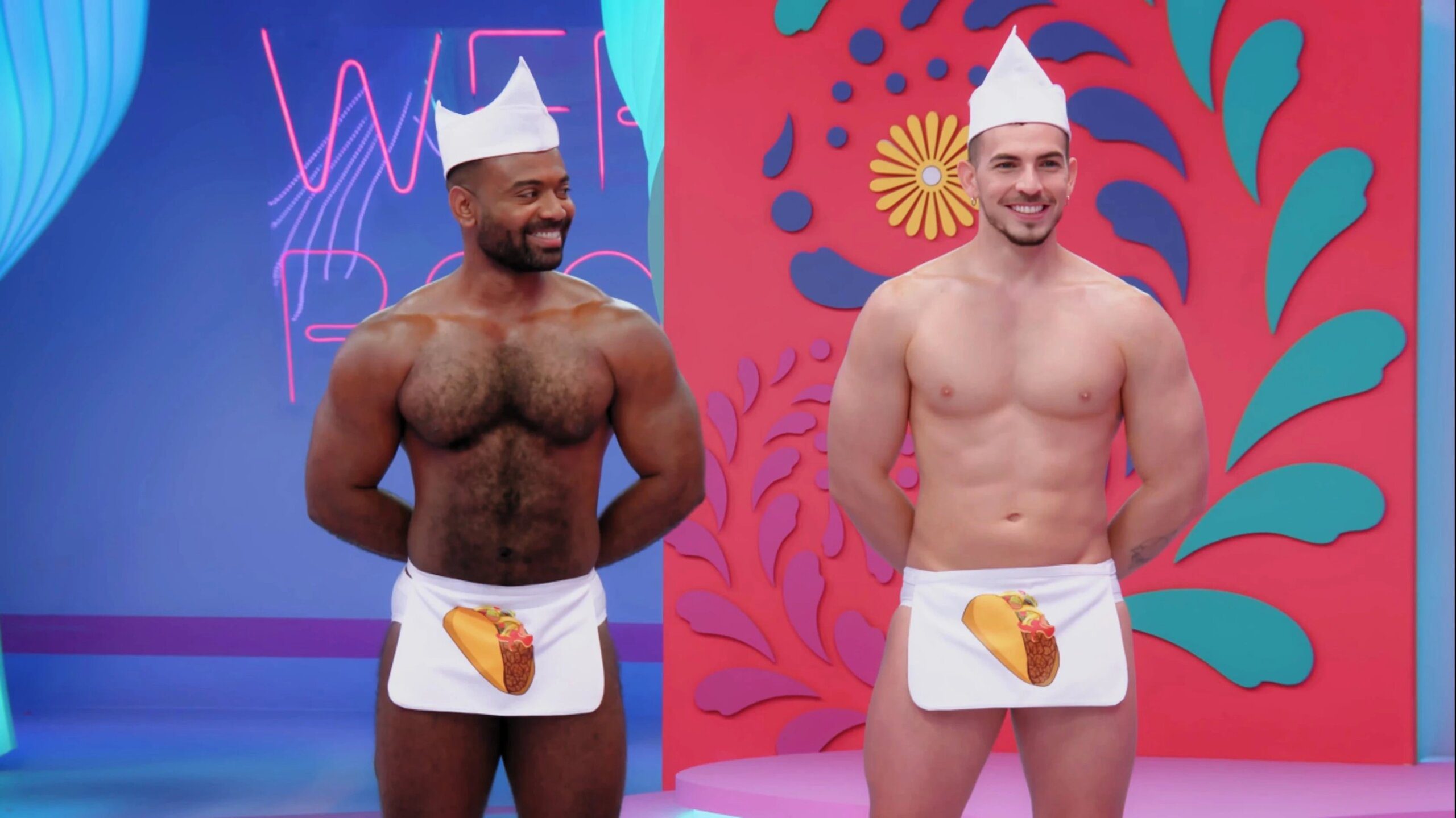
A gratuitous Pit Crew shot. Just because. Credit: World of Wonder
Overall, these were welcome changes, especially since Latin queens haven’t always had the chance to shine on Drag Race shows. (RPDR AS8’s Jessica Wild is a welcome recent exception.) In the early seasons of U.S. Drag Race, Latinx queens were often merely the brunt of jokes about their accents. Then, on Drag Race U.K., Choriza May was on the receiving end of unfair, even cruel, judging. Even Lolita Banana was met with xenophobia and pointed critiques about her Mexican identity when she was competing on Season 1 of Drag Race France. And according to her, this even happened to her when she lived in Mexico.
“In Mexico, art is so white. It takes privilege to access art, to do art,” she tells me. “To be an artist is so complicated with people of my skin colour and with my ethnic origin.” Hence, her move to France, where she now feels “half French, half Mexican.”
“I can tell you that I love my Drag Race France sisters now,” she says. “I will give my life for them …. okay, well, I won’t give my life for them, but I will give my most expensive jewellery for them.”
Mexican culture galore
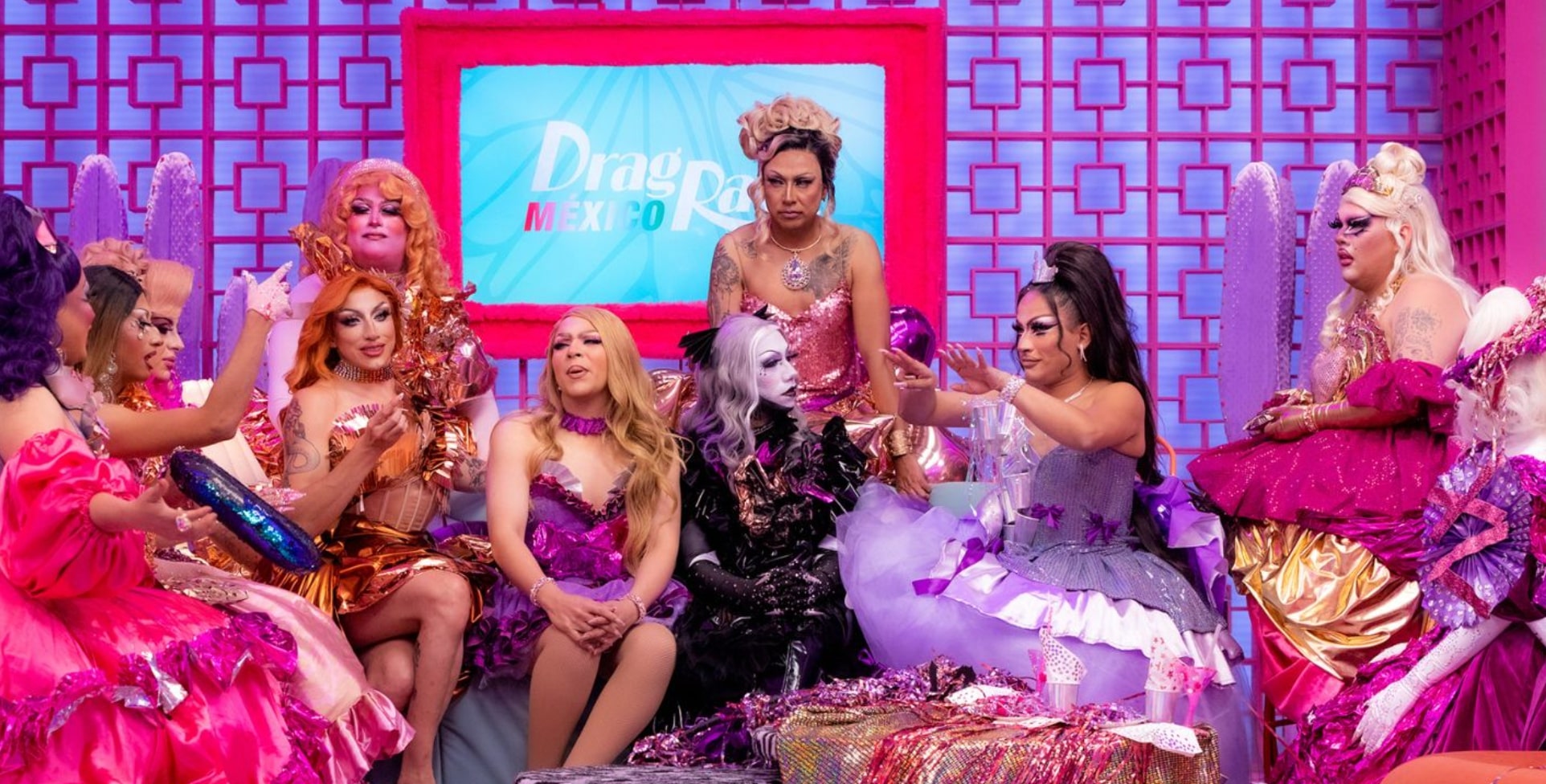
Following the Quinceañera runway. Credit: World of Wonder
Fortunately, the series’ distinctiveness didn’t stop with its kumbaya vibe. DRM found many more ways to celebrate and centre Mexican culture and Mexican personalities. From the inclusion of singer and Elite star Danna Paola as a guest judge to Regina Voce’s Episode 1 runway as the Angel of Independence—a symbol of Aztec heritage—this was a season full of Mexican icons ranging from regionally specific to internationally recognized. In between, there were appropriate pit stops at a taco-eating mini challenge, an Acapulco Shore parody, and even a lucha libre mini challenge, complete with dragged-up wrestling costumes and choreographed death drops. At one point, Regina even led a castwide tarot reading, which proved cathartic for her fellow contestants, and prescient for the queen who ultimately went home that episode. Tarot reading, for the uninitiated, has strong connections to Indigenous people in Mexico, as a way to keep their divination traditions alive in colonial times.
There were also opportunities to educate this season. The “Night of 1000 María Félixes” sent me down a María Félix Wikipedia rabbit hole, whereas Margaret Y Ya’s appearance as Xochipilli —the ancient god of art, queers, prostitutes and transness—made me revisit my anthropology notes from college. Even Cristian’s Episode 1 ravishing reveal was an educational moment. She appeared first as a typical artisanal painted jar from Mexico’s Tlaquepaque region, before transforming into a traditionally dressed Tlaquepaque woman, resplendent in transparent ribbons.
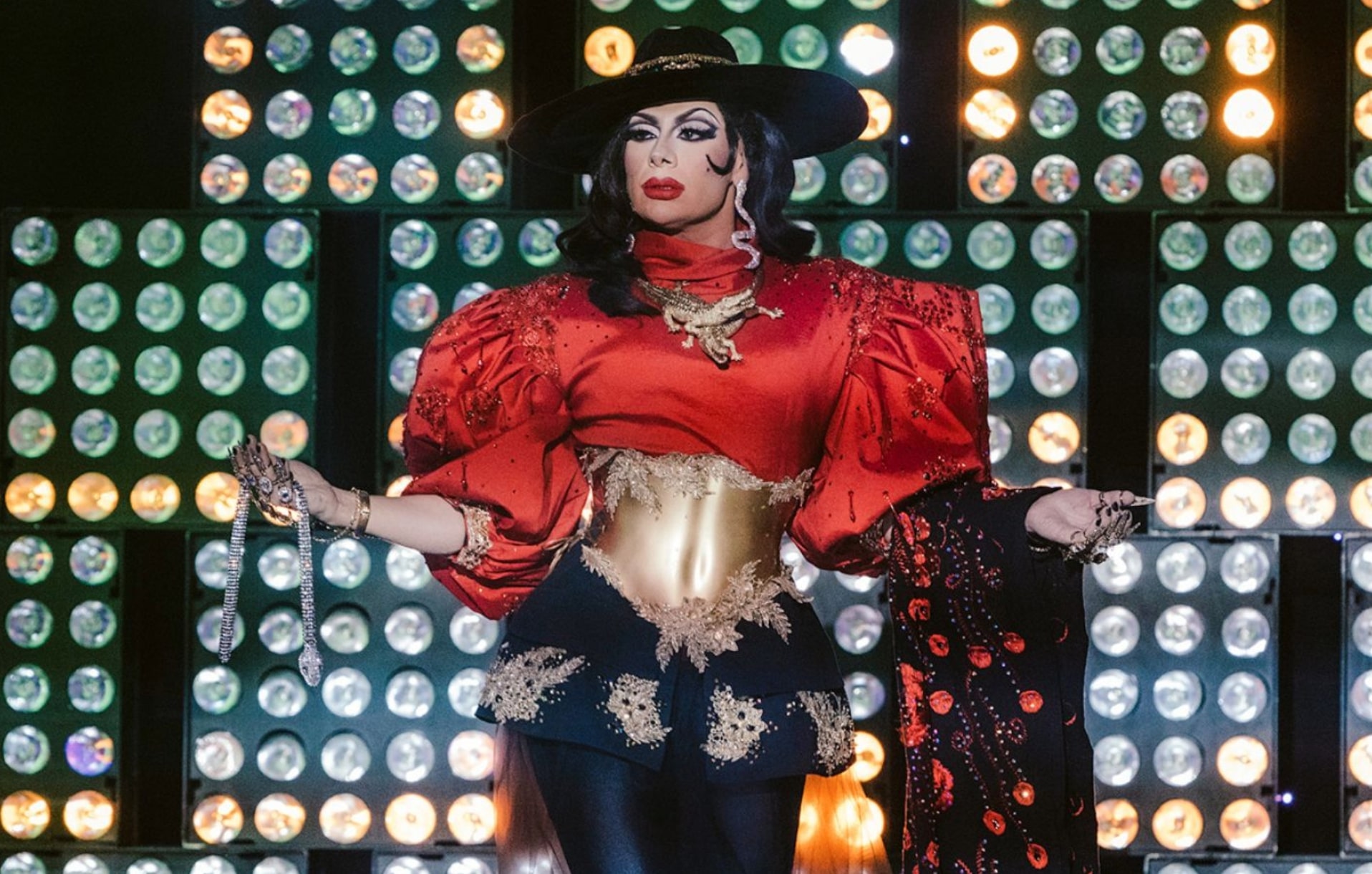
Regina Voce during the Night of 1000 María Félix runway. Credit: World of Wonder
However, the Telenovela Ball was the true apotheosis of DRM’s synthesis of Mexican culture with the Drag Race formula. It had the parade of looks that Drag Race balls have come to be known for, but with a Mexican twist: each queen’s three looks had to tell a telenovela-esque story of a naive ingenue becoming a rich villain. Many past DR queens have tried to connect their ball looks together, but none have succeeded with such verve as the Mexican queens in this unique test. It was a mix of fashion and melodrama, with an added challenge of character development.
Drag Race México’s season-long fusion of Mexican themes and influences also worked perfectly with certain queens’ aesthetics. Matraka’s, for instance. “What really interests me is how those elements that form Mexican culture can integrate into society, to create what we call cultural identity,” she says. “Like a matraca. A matraca is a Mexican toy, but not necessarily indigenous.” Like Matraka herself, and Mexico at large, the artifact is an end result of both indigenous culture and colonialism. “You start to think about elements from Mexico that come from all over the world,” she adds. “They come from India, they come from China, they come from Spain, they come from everywhere.”
The hosts with the most
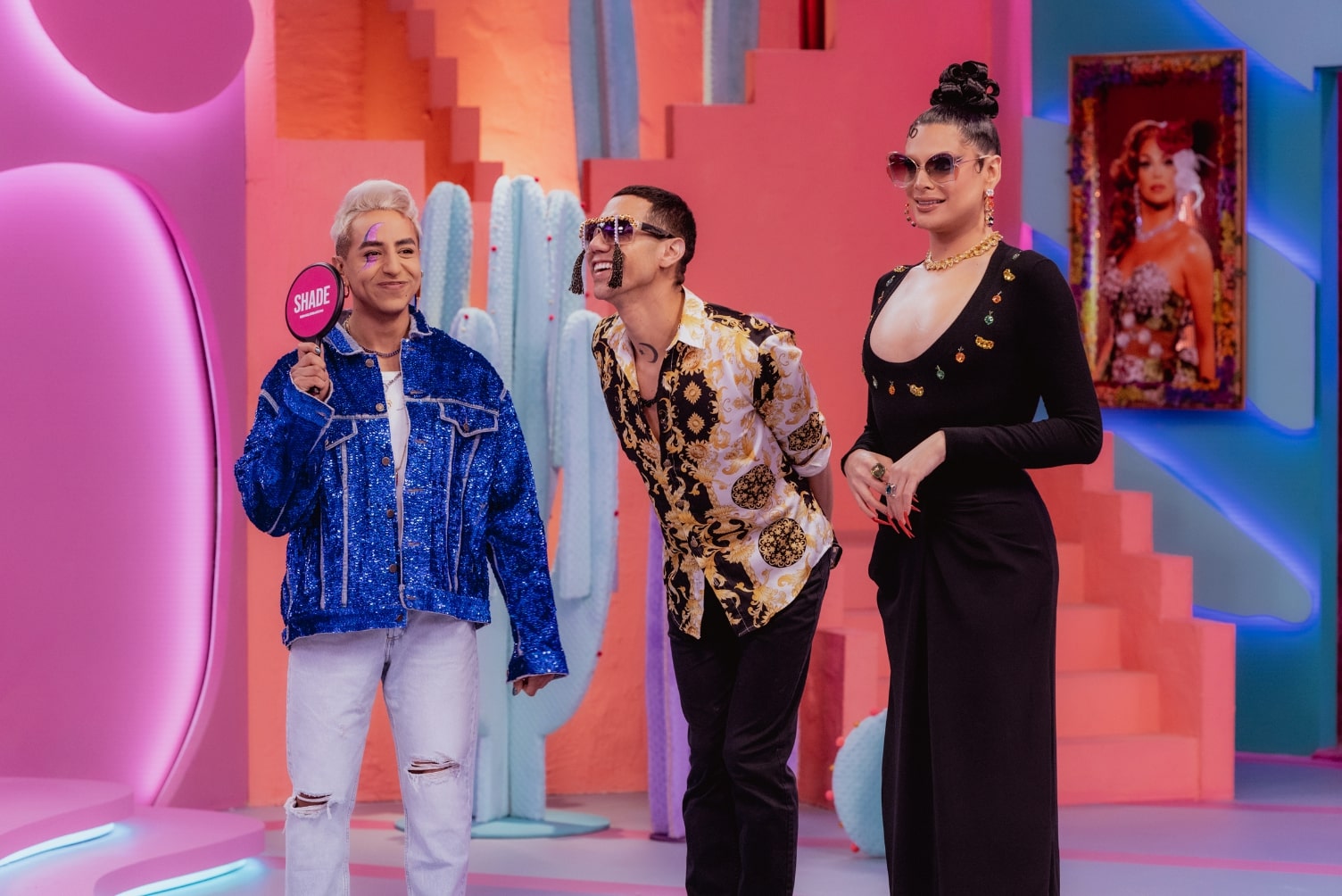
Lolita Banana, Pixie Pixie and Valentina during the Reading Challenge. Credit: World of Wonder
Speaking of things coming from everywhere, the hosts were another highlight of this show. Well, two of them, at least. There was Valentina, of course, but she was sometimes standoffish with the queens and usually lacked the exuberance that Lolita Banana, her co-host, exuded in all of her appearances. Perhaps that’s to be expected from a queen like Valentina who’s not known for working well with others, but alas. Valentina’s sometimes half-assed attitude allowed Lolita and Óscar Madrazo to shine.
From the fan that she flapped open at the end of every episode, to her “Holi Holi Holi” that she sang out every time she entered the aquamarine-and-magenta werk room, Lolita was clearly doing the most to ensure this season of TV became i-con-i-co. She was also a native Spanish speaker, which made her a natural fit for judging this show. She brilliantly found ways to play off Valentina, as evidenced by the episode in which Lolita entered the main stage in a fabulous gold getup, whereas Valentina entered as a luxuriously adorned Smurf. The contrast was unforgettable.
“I was like a sponge when I was next to [Valentina] … learning all the things she can show me, she can teach me,” says Lolita, who had nicer things to say about Valentina than most U.S. queens during her Season 9 run. “And she’s very generous with me. She always tries to protect me, give me advice.”
Madrazo, meanwhile, continued to prove his fashion industry credentials week after week, serving up genderfuck realness. One of his many highlights was his campy Norma Desmond–esque turban look.
Unfortunately, fans didn’t always live for the judges’ decisions. When it came to the season’s estelares—Gala Varo, Regina Voce and Cristian Peralta—the judges’ favouritism rubbed many viewers the wrong way. Of course, this wasn’t the judges’ fault, it was the producers’. It also wasn’t the fault of the estelares. Gala, with her Chelsea Peretti aesthetic, slutty jokes, chic looks and jaw-dropping moves, was a font of entertainment throughout the season. Her Episode 10 lesson on tucking, complete with white board and props, was an obvious highlight of the season. She also gifted viewers with the poetic phrase, “Me palpita la pepita,” which loosely translated to “My lady parts are quivering.” Regina, meanwhile, was the eldest and wisest of the queens, doling out kind and invaluable advice whenever she could. She is also a Broadway-level actor and singer, and should have won the musical episode over Cristian.
“For us, for the hosts, the hardest part comes after the shooting, when the people discover the show,” Lolita tells me. “Because then they agree or don’t agree with our decisions. But we have a lot of responsibility, and we have to face it.”
Still, the favouritism was there. In the Dragapulco Shore parody, the estelares conveniently ended up with roles that actually blocked the view of every competitor behind them. At various points, they used maxi challenges as opportunities to suck up to the judges and remind them of their relationships before the show. After Cristian got a high placement in the most “safe”-worthy quinceañera look in Episode 2, Madrazo even felt compelled to comment on his fellow judges’ blatant Cristian favoritism, calling them “incristianadas.”
“I think that Cristian is just so good that we tend to like everything that she does, but it’s not always the best and not always right,” Madrazo would later tell me. “So, when they were just going with the flow because they like Cristian so much, I just said, ‘Stop.’”
Unfortunately, the show’s favouritism toward the estelares often led to unfair treatment of other talented queens. For instance, Vermelha Noir—a young queen who brought inspired, complex, and thoughtful looks to the runway—was consistently read harshly, despite her artful and singular perspective. Her drag mother, the perpetually black-and-white-clad Pixie Pixie, was read unfairly, as well.
“Vermelha is very talented with makeup, and can transport you into other worlds,” Madrazo says. “And she’s very good for [portraying] period culture. But the truth is that we need more than that —the whole package.”
But when producers decided it was time for Vermelha to leave, the judges had to bend over backward to justify her elimination. In her elimination episode, she was literally the scene partner of that episode’s winner, matching the winner’s energy and even supplying her with improvised jokes and concepts during the maxi challenge. But then she was read for not giving enough effort. Call her the Charity Kase of the season.
All that being said, the judges and the producers had the smarts to keep Matraka, the obvious revelation of this show, all the way to the end. If there’s a “future of drag” to come out of this season, it’s her—no matter what she says in interviews. With her unique mix of style, wit, conceptual art and aw-shucks demeanour, she’ll no doubt go far in the Mexican entertainment scene (and perhaps beyond). In fact, she’s already recognized the impact that Drag Race México has had on her life.
“[Mexico] is very huge, and in the smaller towns … there is a lot of ignorance,” she says. “But now, at home, they’re telling me, ‘My mom is coming with me to watch the program now,’ or, ‘A straight friend of mine is coming with me to see the program, and he is informing himself about the subject.”
The verdict
Of course, no reality show is going to please all its fans, and Drag Race México didn’t commit any terrible sins during its first season. If anything, its controversiality was a result of Drag Race fatigue and wised-up fans who’ve become all too adept at sniffing out rigga morris. That said, U.S. Drag Race franchises and their international brethren could stand to learn from Mexico’s run. If there are any lessons to be absorbed here, they are: blatant riggory is boring, camaraderie is fun and people who deserve to win things … should win. Perhaps that last suggestion is the most revolutionary. And speaking of winning, I’ll be watching tonight (well, maybe tomorrow) to see if Matraka really does pull ahead of the obvious frontrunner, Cristian. Out of the four finalists, Matraka is the only one who never made a misstep this season. She also has a genuinely exciting approach to drag and art. Oh, and as a final note, I realize that I have written several anti-Valentina sentences within this Gringo Guide. So, when her fans inevitably find me, please play “Read U Wrote U” at my funeral.
And with that, I leave you these glorious shots from the queens’ “gold” runway, which may go down in Drag Race México history as an all-time best. It should make you want to watch Season 2.
Some interview comments have been translated by the author from the original Spanish.
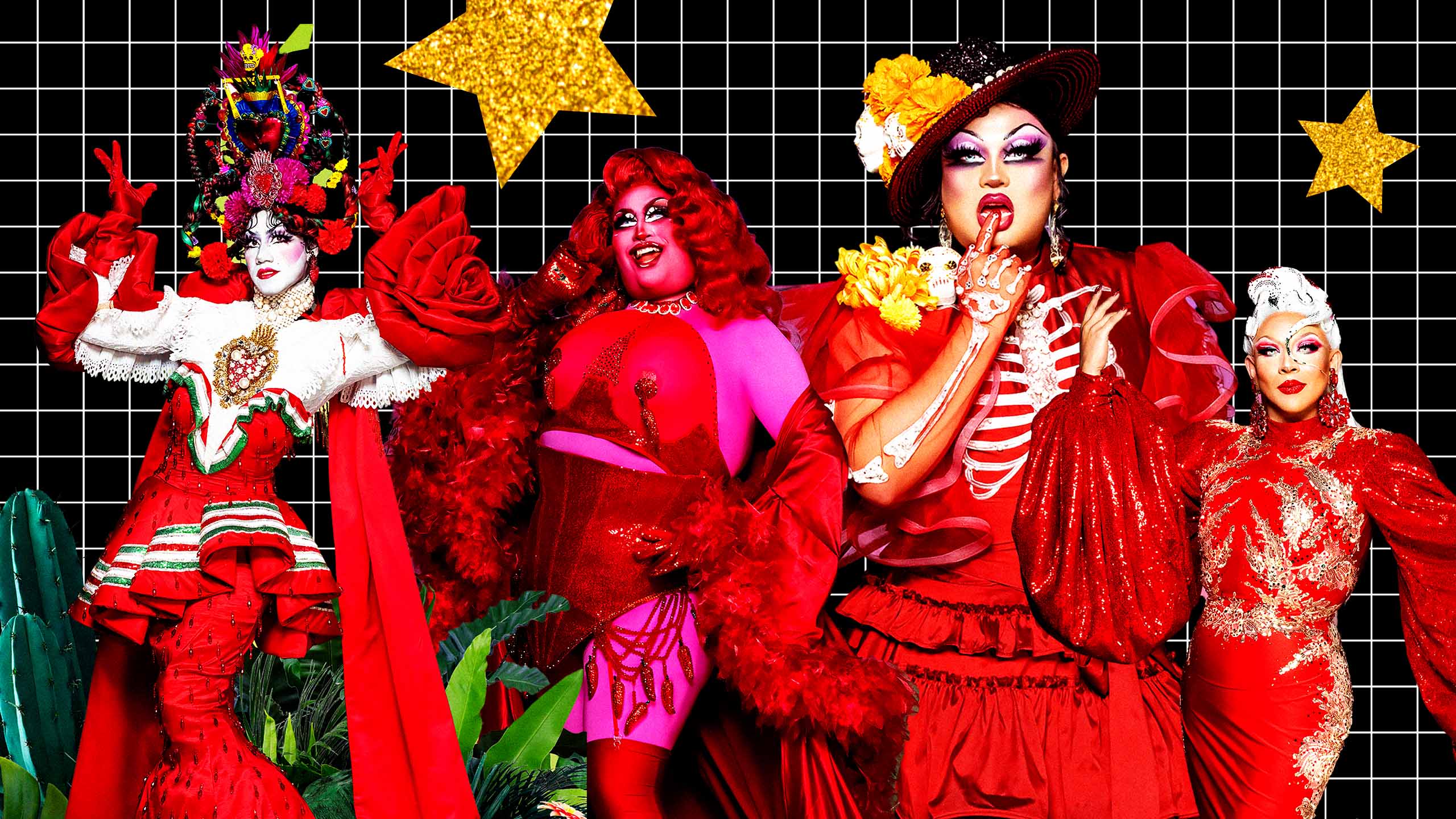

 Why you can trust Xtra
Why you can trust Xtra


